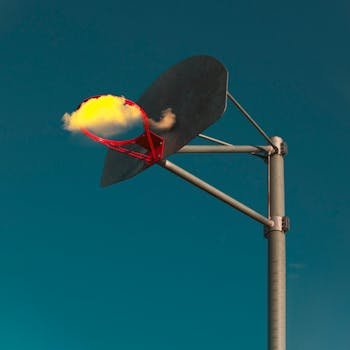Understanding the Potential for a USA Iran War
The specter of a USA Iran war has loomed large over the international stage for decades. Tensions between the two nations are deeply rooted in historical events, political ideologies, and competing regional interests. This isn’t just about two countries; it’s a complex web of alliances, proxies, and global power dynamics that could have far-reaching consequences. In this comprehensive guide, we’ll delve into the history, analyze the current state of affairs, explore potential triggers, and consider the possible future scenarios of a direct conflict. We’ll provide actionable insights into understanding the complexities of this situation, helping you stay informed and navigate the noise surrounding this critical issue.
This post will cover:
- The historical roots of USA-Iran tensions.
- Current geopolitical flashpoints and proxy conflicts.
- Potential triggers that could spark a direct war.
- The military capabilities of both nations.
- The possible global implications of a USA Iran war.
A Historical Overview of USA-Iran Relations
To understand the present, we must first understand the past. The relationship between the United States and Iran has been a rollercoaster, swinging from close alliance to bitter animosity.
The Era of Cooperation (Pre-1979)
Before the 1979 Islamic Revolution, the United States and Iran, under the Shah, were strategic allies. The US supported the Shah’s regime, viewing Iran as a bulwark against Soviet influence in the region. This alliance was built on shared strategic interests, primarily containing communism and ensuring the stability of oil supplies. The US provided Iran with significant military and economic assistance. However, this support also fueled resentment among Iranians who viewed the Shah as a puppet of the West.
The Islamic Revolution and the Shift to Hostility
The 1979 Islamic Revolution dramatically altered the relationship. The Shah was overthrown, and Ayatollah Khomeini established an Islamic Republic vehemently opposed to US influence. The hostage crisis at the US embassy in Tehran, where American diplomats were held captive for 444 days, cemented the animosity between the two nations. This event remains a significant point of contention and a symbol of the deep distrust that persists. The US imposed sanctions on Iran, and the relationship has been strained ever since.
The Iran-Iraq War and Continued Tensions
During the Iran-Iraq War (1980-1988), the United States indirectly supported Iraq, fearing the spread of Iranian revolutionary ideology. While officially neutral, the US provided intelligence and logistical support to Iraq, further damaging relations with Iran. The downing of Iran Air Flight 655 by the USS Vincennes in 1988, which killed 290 civilians, remains a painful memory for Iranians and a source of ongoing distrust. Even after the war, the US maintained sanctions and continued to view Iran as a state sponsor of terrorism.
Current Geopolitical Flashpoints and Proxy Conflicts
The potential for a USA Iran war isn’t just about direct confrontation; it’s also about the numerous proxy conflicts where the two nations support opposing sides. These flashpoints significantly increase the risk of escalation.
Syria: A Battleground for Influence
Syria is a prime example of a proxy conflict. Iran has been a staunch supporter of the Assad regime, providing military and financial assistance. The US, on the other hand, has supported various rebel groups opposed to Assad. This has created a complex and volatile situation where US and Iranian interests clash directly, albeit indirectly. The presence of both US and Iranian forces in Syria significantly raises the risk of accidental or intentional confrontation.
Yemen: The Houthi Rebellion
In Yemen, Iran supports the Houthi rebels, while the US supports the Saudi-led coalition fighting against them. The Houthis have launched attacks on Saudi Arabia and US interests in the region, further escalating tensions. The US Navy has intercepted Iranian arms shipments bound for Yemen, highlighting Iran’s role in fueling the conflict and increasing the risk of a direct confrontation at sea.
Iraq: A Fragile Balance
Iraq is another key area of concern. While the US maintains a military presence in Iraq to combat ISIS, Iran also wields significant influence through various political and paramilitary groups. The presence of both US and Iranian-backed forces in Iraq creates a delicate and potentially explosive situation. Attacks on US personnel in Iraq, often attributed to Iranian-backed militias, have been a recurring source of tension and have prompted retaliatory strikes by the US.
Potential Triggers and Escalation Scenarios
Identifying potential triggers is crucial for understanding how a USA Iran war might unfold. These triggers could be intentional acts, miscalculations, or accidental events that quickly spiral out of control.
Attacks on Oil Tankers or Infrastructure
Attacks on oil tankers in the Persian Gulf or on critical oil infrastructure in the region could be a major trigger. Such attacks could disrupt global oil supplies and lead to a sharp increase in prices, prompting a strong response from the US and its allies. Accusations and counter-accusations would likely follow, further escalating tensions and increasing the risk of military action.
Nuclear Program Developments
Iran’s nuclear program remains a major source of concern for the US and its allies. Any significant progress towards developing a nuclear weapon could trigger a military response from the US or Israel. The collapse of the Iran nuclear deal (JCPOA) has further exacerbated these concerns, as Iran has gradually reduced its compliance with the agreement.
Direct Military Confrontation
A direct military confrontation between US and Iranian forces, whether intentional or accidental, could quickly escalate into a full-blown war. This could involve naval clashes in the Persian Gulf, air strikes on Iranian targets, or ground operations in Iraq or Syria. Such a confrontation would likely involve significant casualties and could have devastating consequences for the region.
Cyberattacks
Cyberattacks on critical infrastructure, such as power grids or financial systems, could also serve as a trigger. Both the US and Iran possess advanced cyber capabilities, and a major cyberattack could be seen as an act of war, prompting a retaliatory response.
Military Capabilities: A Comparison
Understanding the military capabilities of both the US and Iran is essential for assessing the potential outcome of a conflict. While the US possesses a significantly more advanced military, Iran has certain strengths that could make a war costly and protracted.
US Military Strengths
The US military is the most powerful in the world, with advanced air power, naval capabilities, and precision-guided weaponry. The US also has a global network of military bases and alliances, providing it with a significant logistical advantage. According to the Stockholm International Peace Research Institute (SIPRI), the United States’ military expenditure in 2022 was estimated at $877 billion, dwarfing Iran’s defense budget.
Iranian Military Strengths
Iran’s military relies heavily on asymmetric warfare tactics, such as naval mines, anti-ship missiles, and proxy forces. Iran also has a large and well-equipped army, and its geographical location in the Persian Gulf gives it a strategic advantage. Iran’s defense budget is significantly smaller than that of the US, estimated at around $22 billion in 2022, but it has invested heavily in developing its missile program and asymmetric warfare capabilities.
The Asymmetric Advantage
While the US military is superior in conventional warfare, Iran could inflict significant damage on US forces and interests through asymmetric tactics. This could involve attacks on US naval vessels in the Persian Gulf, strikes on oil infrastructure in the region, or the use of proxy forces to target US personnel and allies. This asymmetric capability makes a USA Iran war potentially very costly for the US, even if it ultimately prevails.
Global Implications and Future Scenarios
A USA Iran war would have far-reaching global implications, impacting energy markets, regional stability, and international relations. The potential scenarios range from a limited conflict to a full-scale regional war.
Economic Impacts
A war between the US and Iran would likely disrupt global oil supplies and lead to a sharp increase in prices. This could have a devastating impact on the global economy, potentially triggering a recession. The disruption to trade routes in the Persian Gulf would also impact global commerce, further exacerbating economic problems. The price of oil could easily surge past $150 a barrel, impacting everything from transportation to manufacturing.
Regional Instability
A war could destabilize the entire Middle East, potentially drawing in other countries and leading to a wider regional conflict. This could exacerbate existing conflicts in Syria, Yemen, and Iraq, and could even lead to the collapse of governments. The refugee crisis resulting from such a conflict could overwhelm neighboring countries and create further instability.
Geopolitical Realignments
A war could lead to significant geopolitical realignments, potentially weakening US influence in the region and strengthening the position of other powers, such as Russia and China. The outcome of the war could also shape the future of Iran and its role in the international community.
Navigating the Complexities
The possibility of a USA Iran war is a serious concern with potentially devastating consequences. Understanding the historical context, current tensions, and potential triggers is crucial for navigating this complex issue. By staying informed and critically evaluating information, you can better understand the risks and potential outcomes.
Actionable Tips:
- Stay Informed: Follow reputable news sources and avoid sensationalized reporting.
- Understand the History: Research the historical context of USA-Iran relations to gain a deeper understanding of the current tensions.
- Analyze the Geopolitics: Consider the broader geopolitical context and the roles of other countries in the region.
- Be Aware of Potential Triggers: Pay attention to potential triggers that could escalate tensions.
- Promote Diplomacy: Support diplomatic efforts to de-escalate tensions and find peaceful solutions.
Conclusion
The potential for a USA Iran war is a complex and multifaceted issue with far-reaching implications. While the prospect of a direct conflict is concerning, understanding the underlying factors and potential triggers can help us navigate this challenging situation. Staying informed, promoting diplomacy, and advocating for peaceful solutions are crucial steps in preventing a devastating war. We must continue to monitor the situation closely and work towards a future of peaceful coexistence between the United States and Iran. What are your thoughts on the best path forward? Share your opinions and insights in the comments below.









